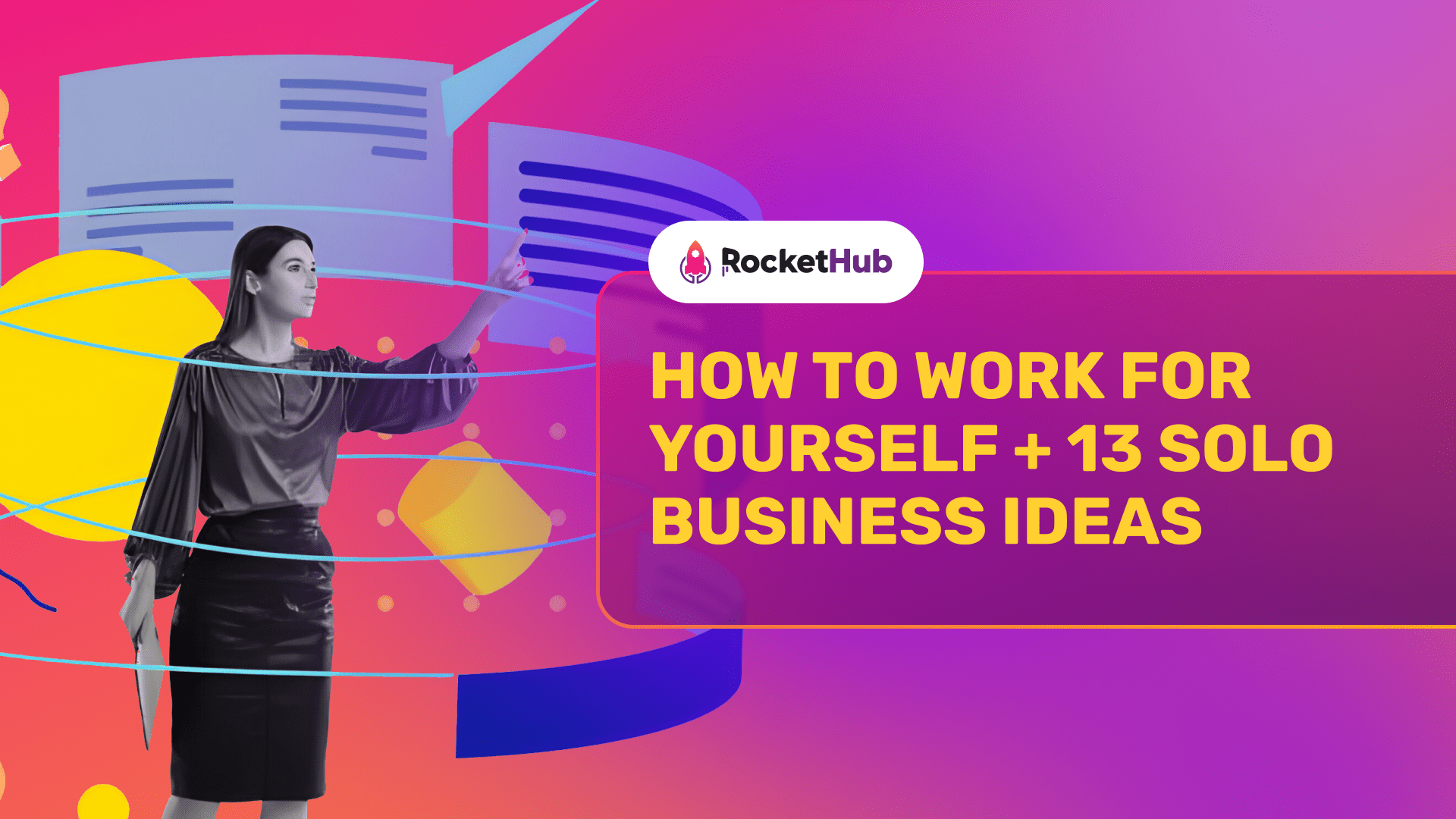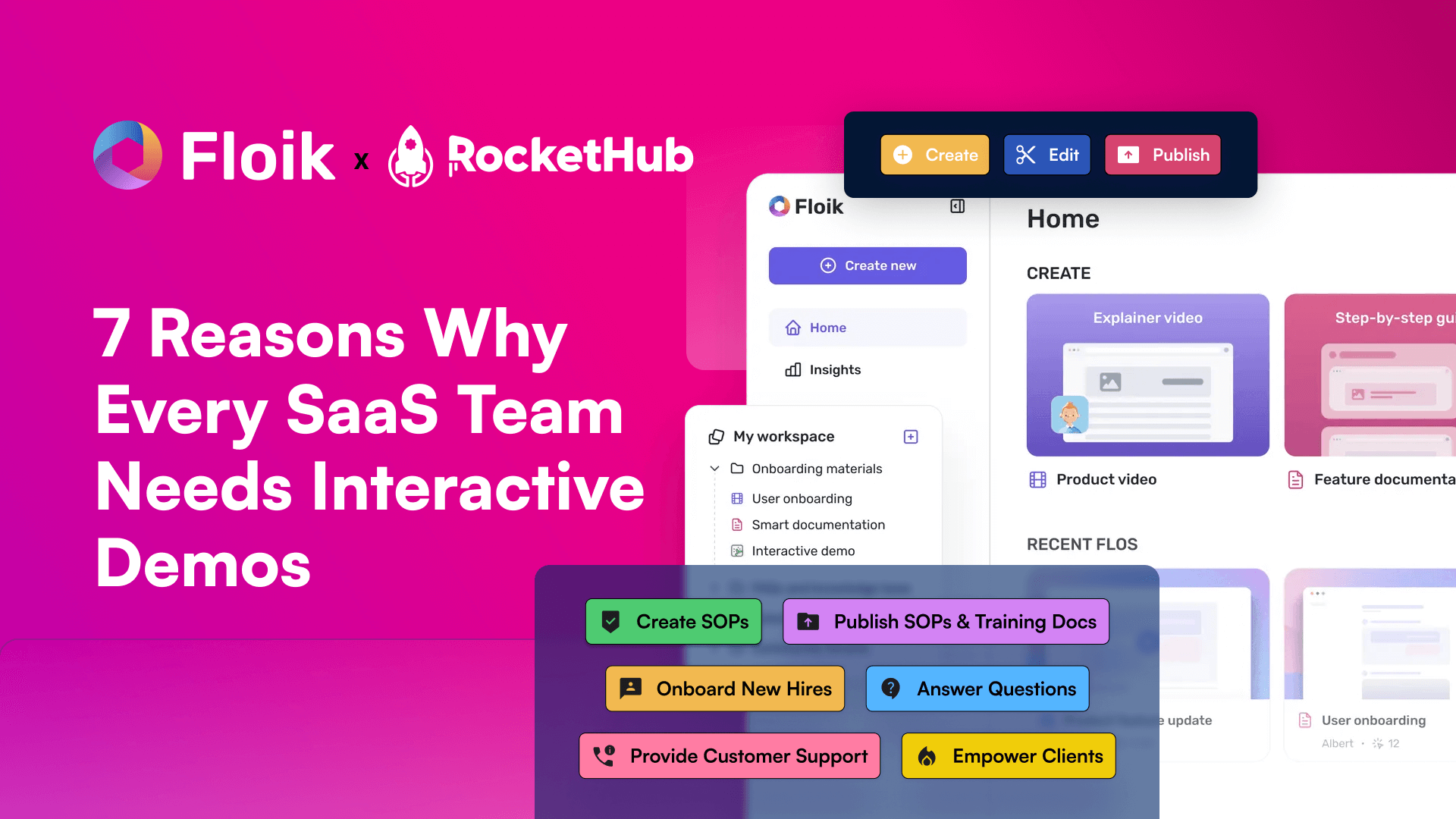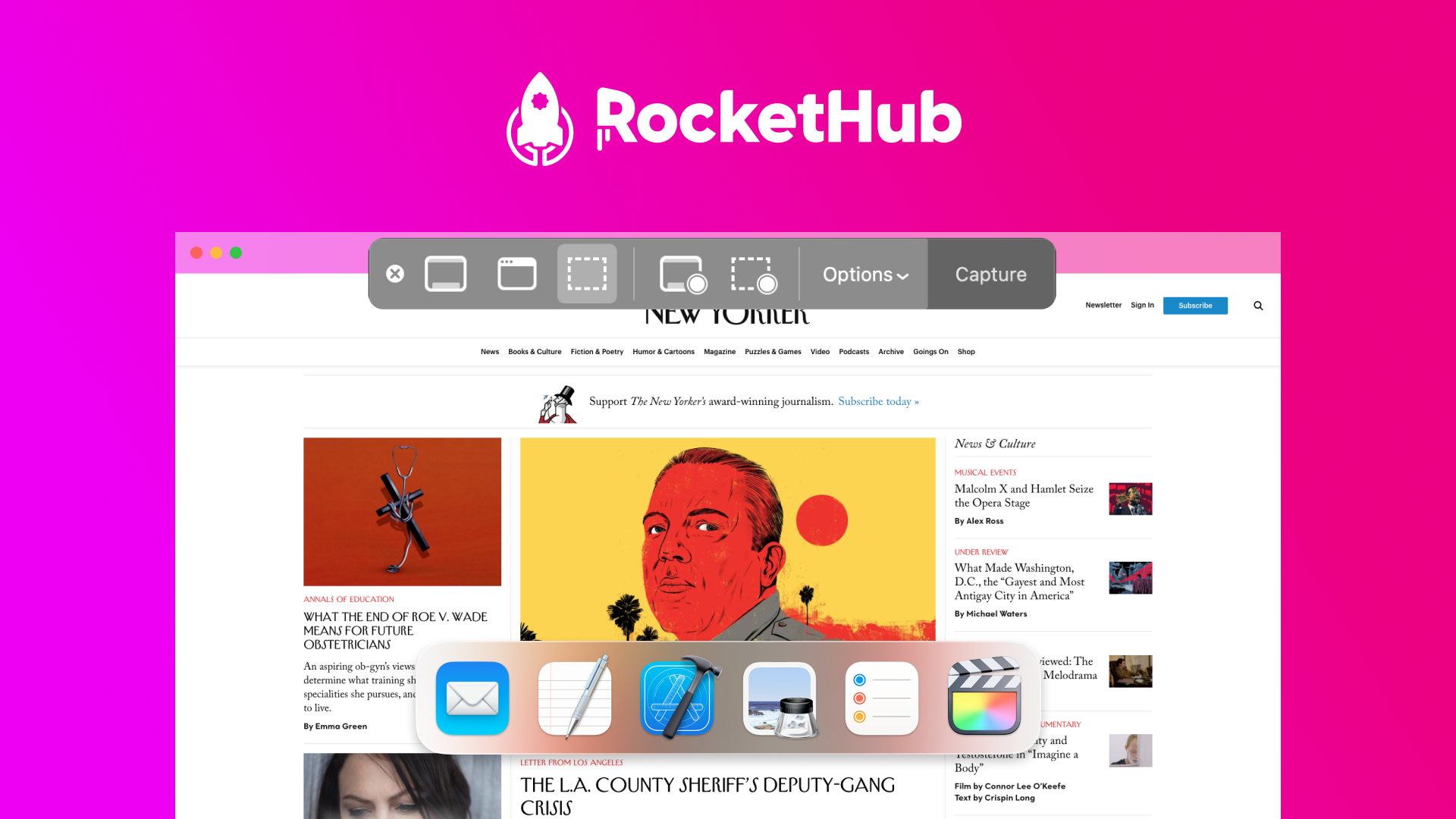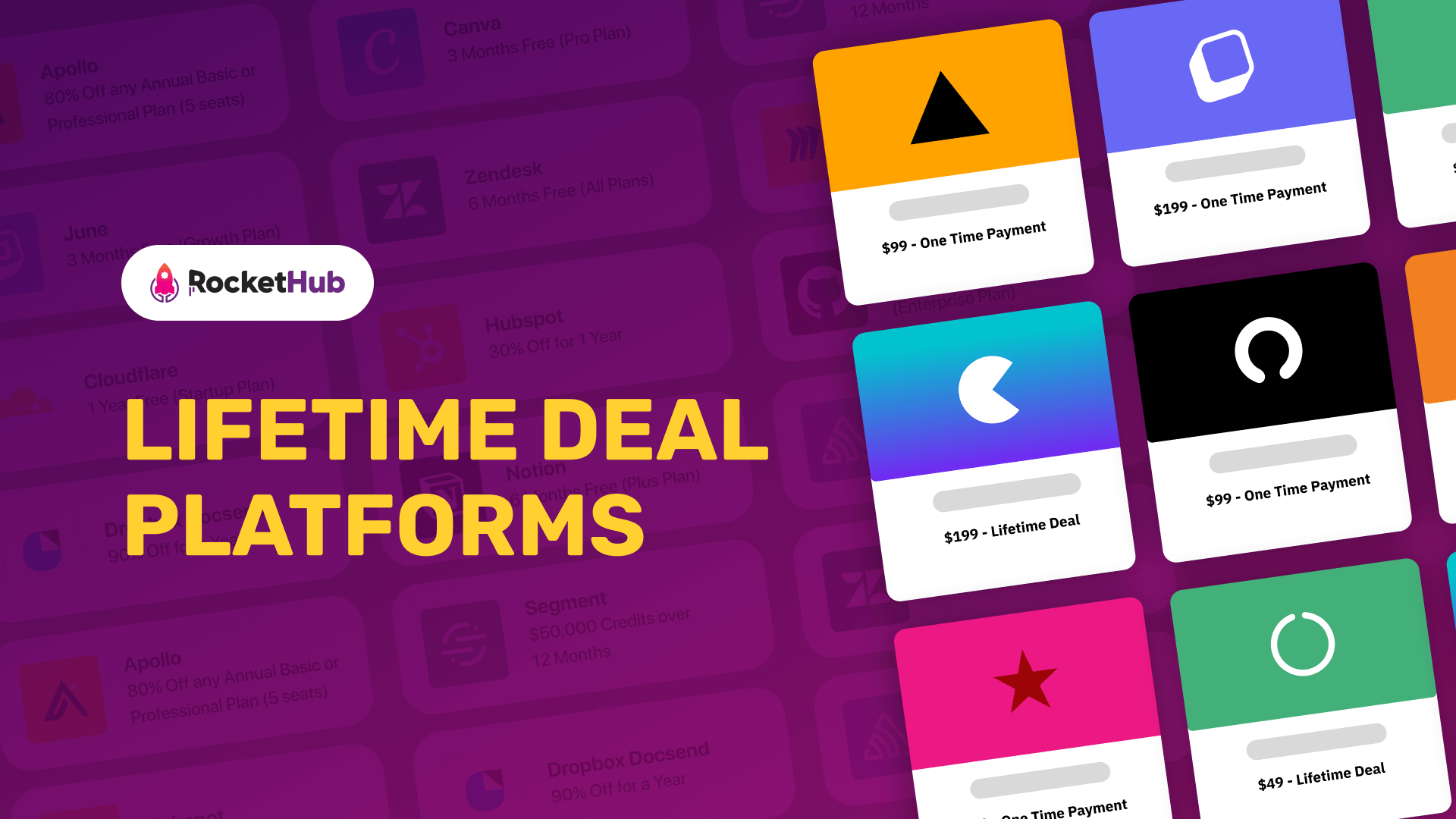
How to Create a SaaS Conversion Funnel
- RocketHub Team
- August 14, 2023
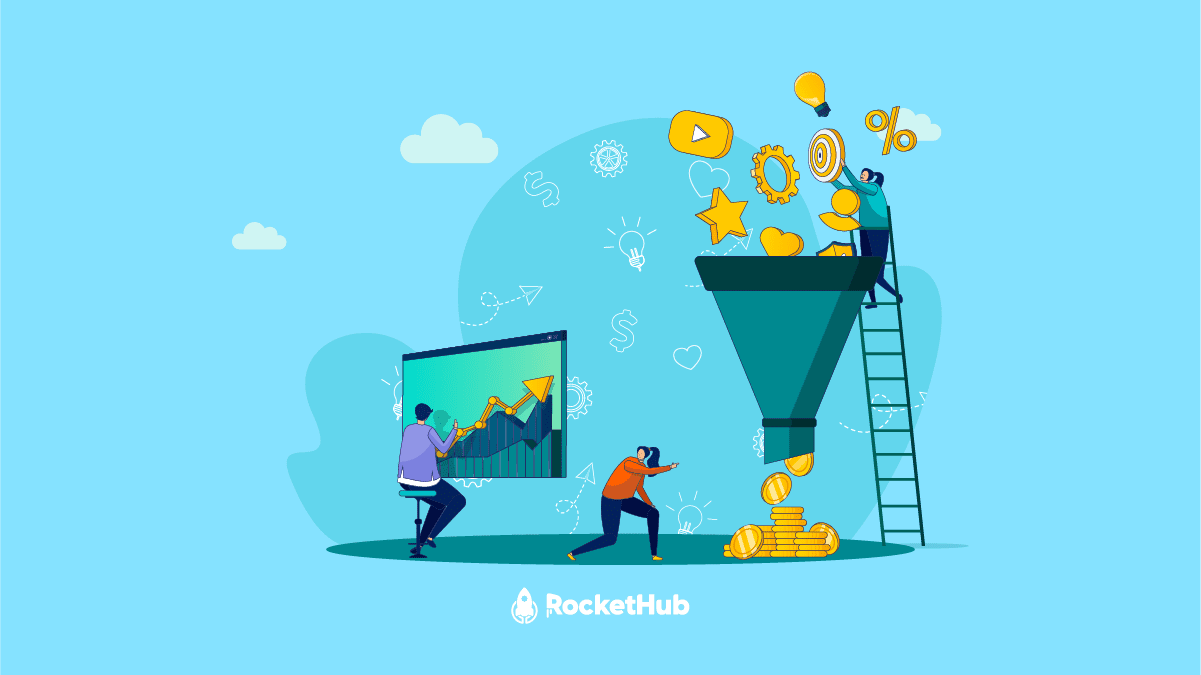
Do you think your marketing efforts have a clear direction? Does your SaaS conversion funnel meet your goals? To help you score more sales in your business, we have covered everything you need to know. Having an optimized SaaS conversion funnel could be the difference between barely surviving to get one or two leads per month to get an endless flow of high-quality leads.
When you have a website, you need to create a conversion funnel that is designed to encourage your visitors at every stage to take action and make the purchase. The question is, how can you design a SaaS conversion funnel for your company? Don’t worry. Because we have created a comprehensive guide that shows you exactly how to set up your first SaaS conversion funnel.
What is a Conversion Funnel?
A conversion funnel is simply a process to visualize the complete flow and the conversion path of a prospect turning into a finalized customer. These prospects could be from any source such as SEO, cold outreach, content marketing, paid ads, etc.
Analyzing and improving the complete conversion funnel process can help improve the flow by taking the necessary actions as per different stages. Let’s break down and understand each step of the sales funnel in detail:
Awareness
At the beginning of a SaaS conversion funnel, you first need to pull potential prospects into your funnel. This is done by making more people and target audiences aware of your brand. It can include any strategy that helps with the brand discoverability, such as:
- PPC campaigns: It lets you target audiences that already search and are interested in products relevant to your business via paid ads.
- Organic search: Whenever your website ranks higher in the organic search, you get a good quality source of leads for your sales funnel
- Social media: For targeting and retargeting potential customers, social media campaigns are highly effective. Considering a massive chunk of your audience is already scrolling through their feeds and wouldn’t mind checking out a few of your business ads that can attract them to your funnel
There are many more such ways to attract potential prospects. However, the goal is to focus on quality leads over quantity. You do not want to attract unqualified leads that do not generate any traffic or convert in the long run. As you develop such campaigns and curate more marketing strategies, keep the target audience as your top priority.
Interest
Once you pull the prospects into the funnel, it is time to build their interest gradually in your business. You can start by determining their needs and any questions which they might have about your business. Next, create content and publish in-depth information and guides which answer their queries. Illustrate the value your business provides and how your services can help them with their queries. This will help establish the brand authority and keep your potential prospects engaged and interested in your brand.
Desire
Next, you need to build the interest even more within your prospects. Demonstrate why they should invest in your business and not your competitors. An email autoresponder series or drip campaigns work best here since it is designed to build relationships with prospects even stronger.
This stage is all about highlighting the solutions to their problem. The approach for your brand to solve their queries, and how it is different from your competitors. In short, make them desire your business’s solution, and you are almost near to the final conversion.
Action
The last and the most crucial step of a SaaS conversion funnel is action! It is the ultimate effort that can bring fruition to all the efforts of the previous stages. Here you need to persuade them to take action in your brand’s favor. Only a small percentage of prospects may reach this stage. However, they are indeed very qualified and hold the potential to be your loyal customers only when you can compel them to finally make the purchase!
How to Create a Sales Conversion Funnel
Now that we have discussed the different stages of a sales funnel and the basics, let’s delve into the complete process of how to create a sales funnel builder for your SaaS business. Remember, creating a sales funnel is not an overnight process. It takes months of research and consistent efforts to get it done. Let’s get into the steps below:
1. Map Out Your Ideal Buying Process
The first step to creating a sales funnel is monitoring the entire path of a customer right from the first interaction to becoming a customer. You need to note that out of 1,000 visitors to your website, only 22 may buy, which is even less than half of the first number. It may even go higher or even lower. Hence, you need to map the ideal path through your website.
There could be several paths that will account for each conversion. Try to note each path. You will get a better idea of how the mass chunk of your customers moves through the entire funnel.
If you push all the visitors through the same funnel, you may not find adequate results with these predetermined steps. You could also miss optimization opportunities on the pages it does not include. If you are confused, you can start working backward by asking this simple question: What are the most vital goals of your website?
Be it sales or leads. Palace that particular action at the bottom of the funnel and pave your way towards the top. Determines the actions your ideal buyer needs to take to complete this step, such as downloading a resource, signing up for an email newsletter, etc., and this will be for the action stage of the funnel.
There are multiple micro-conversions happening at each stage. Whenever a prospect looks for information, they find your business and provide their email address on the landing page. Next, they get the offer and click on it, which is a micro-conversion. Again, if the offer was worth investing in, you have another micro-conversion. Thus, to develop the sales funnel, you need to focus on every stage’s micro and macro conversions.
For example, every item on Amazon has multiple ways to facilitate micro conversions.

Viewers can check out the product videos, read reviews, check out any special discounts and offers, etc. These are small actions that help learn more about the product and bring them to the next step of the funnel and closer to the final purchase.
Your micro-conversions could be anything, from email signup to adding the product to the cart or the final purchase. It should be dedicated to helping them learn more about your brand and the services while engaging with it.
2. Set Up Your Conversion Goals in Google Analytics
After you have mapped out your ideal funnel, it’s time to measure it with Google Analytics. Google Analytics can help improve the website’s performance by providing you with the information you have uploaded on your website and other such aspects.
To get started with Google Analytics, you have to set the goals at each funnel stage. Here’s the process to add the goals:
- Login to Google analytics and go to Admin Settings. Select the View and click on Goals.
- Click on New Goal on the top left corner and add as many goals as you want for your funnel. You can also find a few templated options at the top of the screen to choose from, such as account creation, online registration, social engagement, inquiries, etc.
- If you want to add custom goals, you have four options:
- Destination: A user visits a specific URL
- Duration: The time spent on your website by the user
- Pages/ Screens per session: The number of preset pages that the user visits
- Event: The number of actions the user takes on an element that is tracked with Javascript.
All of these measures will help in measuring the different types of actions on your website. It is recommended to set up thank you pages after every conversion. Thank you page can direct them to additional content or the next step that will encourage them to spend more time on your website and learn more about your brand.
3. Track Your Conversion
To track conversion, you need to give specific names to your goals that represent the action accurately. For example, if your goal was to contact form submission and you already have other goals on your website, you may need to choose a specific goal name here.
Next, enter the URL of the subsequent “thank you” page right beside the space of Destination. For every goal, you have the option to add a funnel wherein you can add a list of pages that your viewers typically visit before completing a specific goal.
The funnel reports from google Analytics offer terrific insights to analyze the funnel and find any areas of improvement. Once you have added the URL, choose whether you want to track entries into the funnel that happens after the first page or the other pages.
For example, if a user directly checks out the services page on your website instead of visiting the general services page, would you still like to take them into account in your funnel report? If yes, just check the box, or if not, you can uncheck it to eliminate it from the report.
However, not to forget that a user’s movements may not be in any specific order. Hence, it would always be preferable to note all the possibilities in the funnel reports. Once you have added the goals, give some time to your website to collect the data and provide you with the results.
4. Build Interest with Content
Content is king and one of the very crucial determining factors of bringing your prospects from one stage of your SaaS conversion funnel to the next.
To create good content, you need to learn about their industry, needs, interests, and other such demographics. This will help you generate better topic ideas that are relevant to each stage of the funnel.
You need to emphasize creating valuable content that is not sales. It should be informative and answer their queries. It is your ultimate lead magnet. You can try out various types of content such as blog posts, articles, tip sheets, infographics, and many more.
For example, infographics and checklists may be great for bringing new qualified leads but not the best for immediate conversions.
Next, you need to leverage the content by asking them to sign up using their email address to access it. This way, the user gets the content for free while your email list gradually increases.
The middle of the funnel content can consist of customer testimonials and case studies. Both can help build the interest of the prospects in your brand and establish the comparison with your competitors. Here, your approach can get slightly promotional since you are subtly pitching about your products at this stage via your content.
Finally, your bottom of funnel content should contain pricing pages, demos, etc., that give your prospects the final push to make the purchase!
5. Identify Leaks in Your Website Conversion Funnel
Like we already mentioned, the average conversion rate accounts from 2.8% to 6% across different industries. This implies that your sales funnel may have holes or gaps that are causing this loss of prospects.
Consider every stage of the funnel as a filter filtering out prospects based on their interests and the will to invest in your brand. So, what about the ones that leave right at the middle of the funnel?
This is why you need to identify any potential leaks, gaps, or holes in your sales funnel at this step via different tools like Google Analytics. Google Analytics helps you to discover such unexpected flaws in your funnel via the Funnel Visualization report.
Select Conversions on the Analytics menu and click on Funnel Visualization to check the visual representation of the journey of the users throughout the funnel.
Here you can find many flaws, such as specific pages that are not driving enough users to the next step, etc., which demands immediate optimization, which we will discuss in the following steps. Alternatively, if you have created a completely wrong funnel, you can identify this by looking at the Reverse Goal Path report. Here you can see the path taken by the prospect to reach a conversion and analyze accordingly.
Analyzing such critical points can help learn more about the potential visitor’s behavior and journey throughout the conversion funnel.
6. Optimize for Conversions
Now that you have identified the potential flaws, it is time to optimize your sales funnel.
The changes can vary from different button colors to a new set of call-to-action and updated forms directed towards more conversions.
The best way to start optimizing your sales funnel is to analyze your own funnel and find the issues. If your funnel has visitors who reach the cart page yet do not finalize the checkout, you may need to optimize your cart page for better conversions. There could be many reasons for users abandoning their carts. Here’s a rough statistics for the same:

Suppose you want to know the precise reasons for the low conversion rates on your website. In that case, you can use testing tools like heatmaps and analyze your audience. Analyse every possible reason that could hinder the conversions. This will give you a deeper knowledge of your funnel.
Heatmaps offer insights about how effective each page is in receiving a conversion. It will also show why users are not taking the desired action and highlight potential distractions in the different stages.
Apart from identifying the flaws in your sales funnel, heatmaps also help you learn more about your users. To optimize your funnel, you can also know more about your audiences through surveys and gain more feedback. This will give you information about their experiences on your website and improve it accordingly. It will help you optimize your website as per your audience’s concerns and needs. The better your website and product meet your customer’s needs, the more are your chances of gaining conversion for your business.
But, who do you understand the effectiveness of the changes and optimizations you just made?
Like any other marketing strategy, you need to run A/B tests to analyze which change and optimization generate the best results. Here you need to collect data from the variations and analyze which one works better than the other. It is always preferable to run a few A/B tests before implementing any change permanently to your business.
7. Consider Creating Additional Offers to Your Sales Conversion Funnel
While some of the leads may filter out as unqualified, some may have just exited your website searching for better deals. There could be many prospects who existed just because your products were out of your budget. A small sale is always better than no sale any day!
Thus, it is time to re-engage with the same users who may have left midway at any stage of the funnel and excited your website. You can try launching an exit intent pop-up that will appear whenever a user is about to leave your website without converting. It is usually indicated whenever the user moves their mouse to the upper corner of the screen, types a new URL, or closes their browser.
There are different types of exit-intent pop-ups available. A discount code is one of the best choices that have the potential to convert in no time. You can also encourage them to download a free guide for just staying on your website and making a conversion. It helps to stay engaged with your brand and allows you to enhance the chances of conversion.
The key is to stay relevant to your target audience and find irresistible points that can be sufficient to lure them into converting!
8. Determine Your Best Sources of Qualified Leads Analyzing Conversion Funnel Metrics
Whenever you use broad targeting during your initial ad campaigns, you are casting a wide net that will attract some traffic that could be interested in your product. Like we have already mentioned, quality over quantity. The wider your target for the ad campaigns, the more percentage of attracted traffic will be unqualified, resulting in complete profligacy of the resources and efforts. Also, let’s not forget, more people will exit your funnel without making it to the next stage. On the other hand, the better you get at attracting the target audience and have narrowed results, the more high-quality leads you will achieve.
This is why you should determine the best sources of your qualified leads in the business.
Try to research your referral sources reports to determine the sources since it gives you just the right data about which source is bringing you the maximum quality leads.
To find the referral source reports, you can check our Google Analytics. Navigate to the Acquisitions Overview, and you will find a detailed report. On the left column of the report, you can find the list of channels bringing the maximum amount of traffic and leads to your website, and on the right, you can find the channels that drive the maximum number of conversions. However, this data is slightly subjective and generalized.
To get more precise insights, you need to do your digging and determine the search engines and other sources that bring traffic to your website. Open the All Traffic report on your Google Analytics. Here, you can find the same data broken down into more details. Here you can use UTM parameters to track different campaigns and analyze the parameters in the results.
Use these reports to find the conversion funnel metrics and analyze the best sources to push your marketing efforts in the right direction. For example, if you observe the traffic from a particular ad set brings more traffic than the email signup form, you may need to adjust your investments on the high-performing ones accordingly.
9. Use Automation to Keep Leads in Your Funnel
Most businesses claim that most of their leads usually require a complex sales cycle to convert. Thus the journey of creating and optimizing your funnel is apparently perpetual. Your visitors may not even make it through the complete sales funnel right from the first visit. The odds of them again returning to your website and converting drastically decreases if you do not find a way to connect to them again. This is when you should leverage drip campaigns and autoresponder emails that share suitable content to their email inboxes.
You may have a good start if you begin your email marketing efforts with a standard monthly or weekly newsletter. Still, it wouldn’t be sufficient to consider the conversion process. Why? Because one specific content may not be relevant to all the subscribers. A user who just learned about your brand recently needs different content from the one who has been a loyal customer of your brand!
Automation makes every process smooth and streamlined. You can either choose a drip campaign or a series of automated and time-based emails. The main goal is customization and personalization with automation.
You need to try segmentation. Here, you segment your email list based on the signup location and tailor the email continent to your subscribers, increasing the chances of bringing them back to your website quickly. You can find multiple tools that consider interest and buyer journey stages while creating the emails. Such emails can establish your brand identity within our prospects while improving your chances of converting gradually.
10. Earn Repeated Customers
Whenever a user makes it to the bottom of your SaaS conversion funnel and makes the purchase, it is definitely not the end of your funnel efforts. Let’s not forget, only the happy customers are your returning and loyal customers. You need to ensure that the customers who made the purchase choose your business again whenever they have a requirement.
The probability of selling a new customer is 5-20%, but the probability of selling an existing customer is a whopping 60-70%. This is why your second sale will be less complex and faster than the first one.
To attract existing customers, your main goal should be to keep them engaged with your brand. This is another scenario where similar automated email campaigns can be highly beneficial. The email should have a strong CTA. Strong CTA encourages the user to check out your website again and make another purchase only on your website. You need to look for potential opportunities to upsell your customers with more irresistible offers and discount codes that complement that previous purchases from your brand.
Emphasize the points they considered while making the first purchase and curate the offers accordingly. The more personalized your offer on the email campaign, the better are your chances of scoring the same sales again!
Conclusion
Developing a SaaS conversion funnel is extremely tricky. Considering the amount of research, analytics, and strategic efforts involved in the entire plan. However, with consistent efforts and patience, you can easily achieve the feat and lock your potential sales. The key is to start researching about your potential audience, leverage the right type of content at different stages, identify any flaws or holes in the funnel, and optimize it to its maximum potential. Now that you know how to create your SaaS conversion funnel, it is time to finally act on it and kickstart the process with the right tools and strategies.
Share This Post
RocketHub Team
The launch crew at RocketHub writes about startup and SaaS growth. Be a fellow Rocketeer and show some love by commenting below with your thoughts on our content.
Table of Contents
Get The Latest Updates
Subscribe To Our Weekly Newsletter
Sign up below to be one of the first crew members onboard and get early access to amazing deals.
Recent Posts


Social Media
Categories
Related Posts
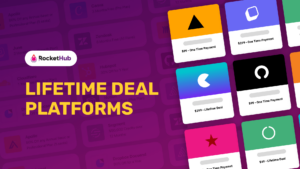
Lifetime Deal Platforms
The best lifetime deal platforms for software. Platforms lik RocketHub scour the web for the highest quality products to bring buyers the best lifetime deals on their platform.
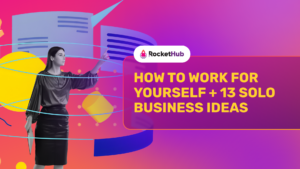
How to Work for Yourself + 13 Solo Business Ideas
Do you ever wonder if being your own boss could truly set you free? In this article, we’ll explore the theory that unleashing entrepreneurial freedom
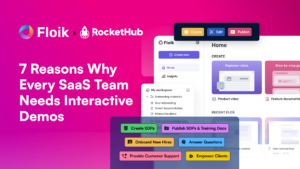
7 Reasons Why Every SaaS Team Needs Interactive Demos
Making a Case for Interactive Demos: 7 Reasons Why Every SaaS Team Needs Them Let me paint a scenario for you. You want to buy
